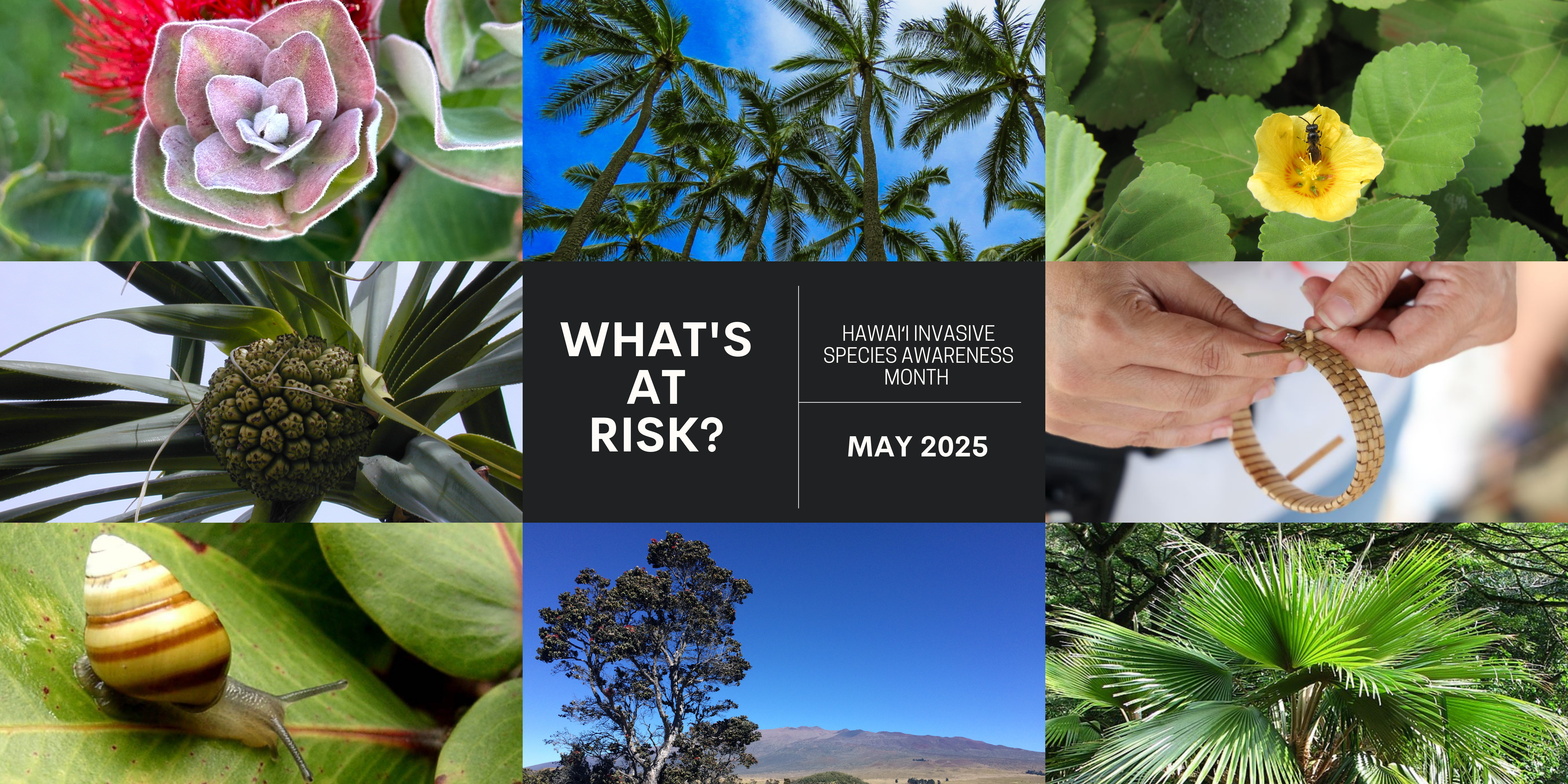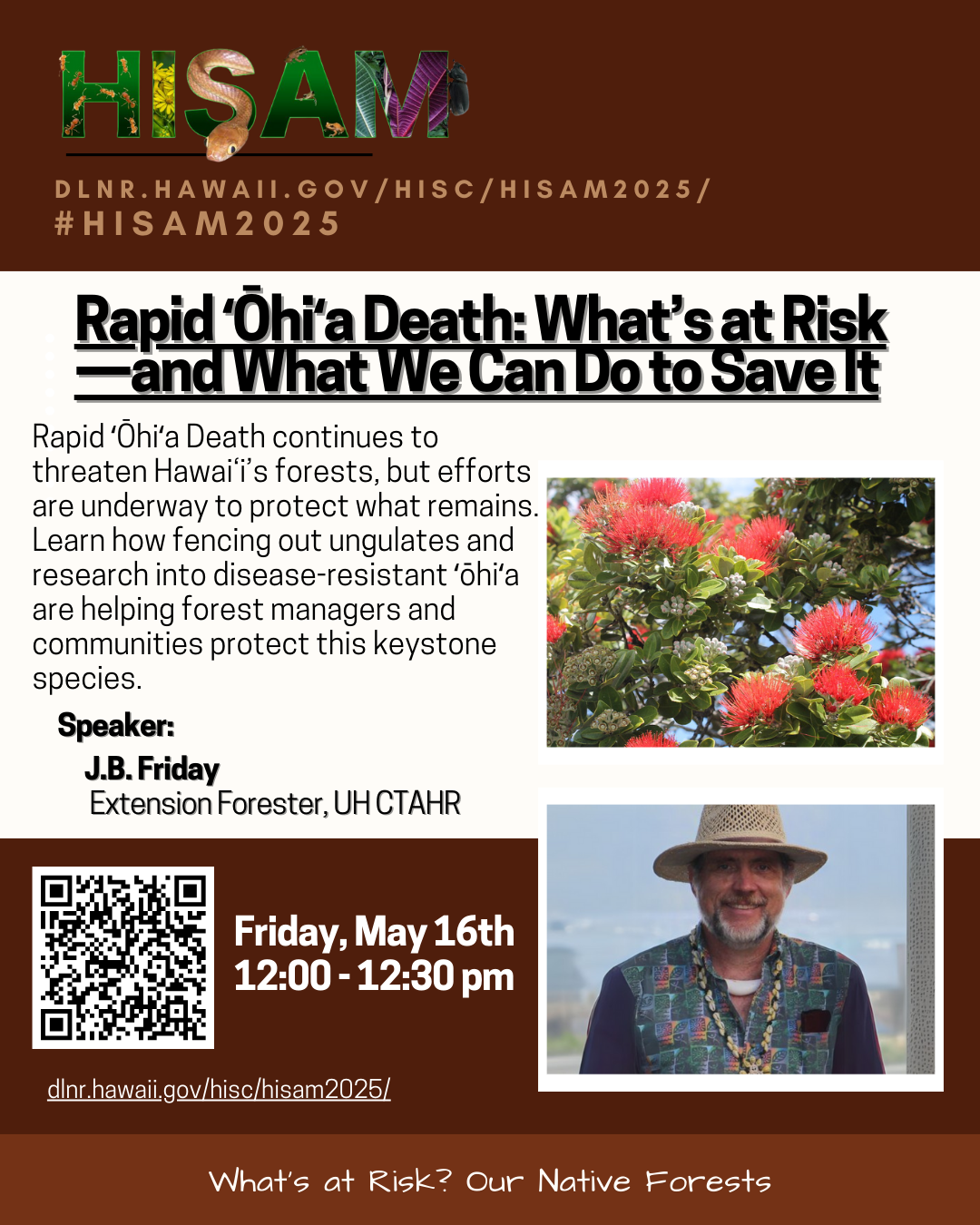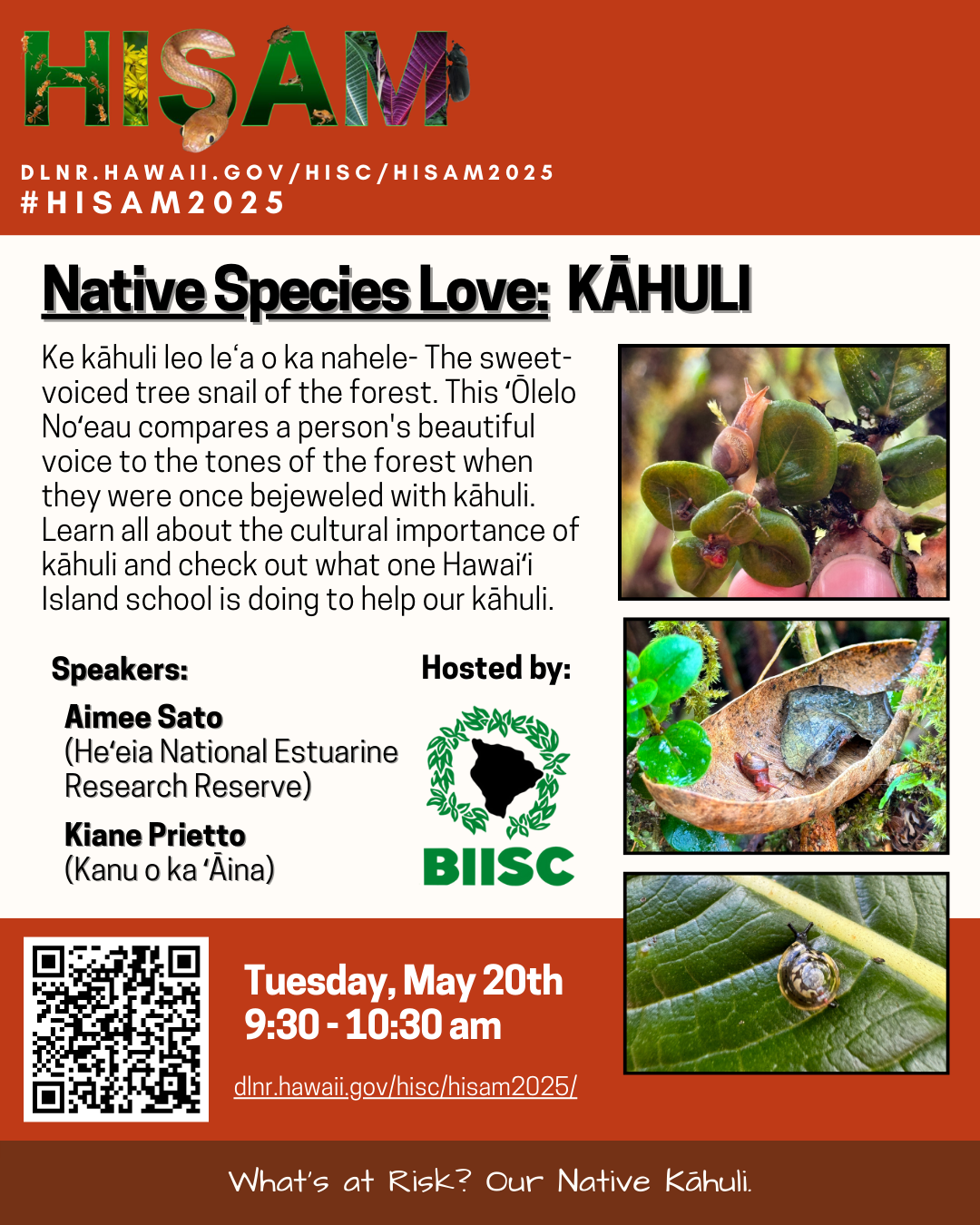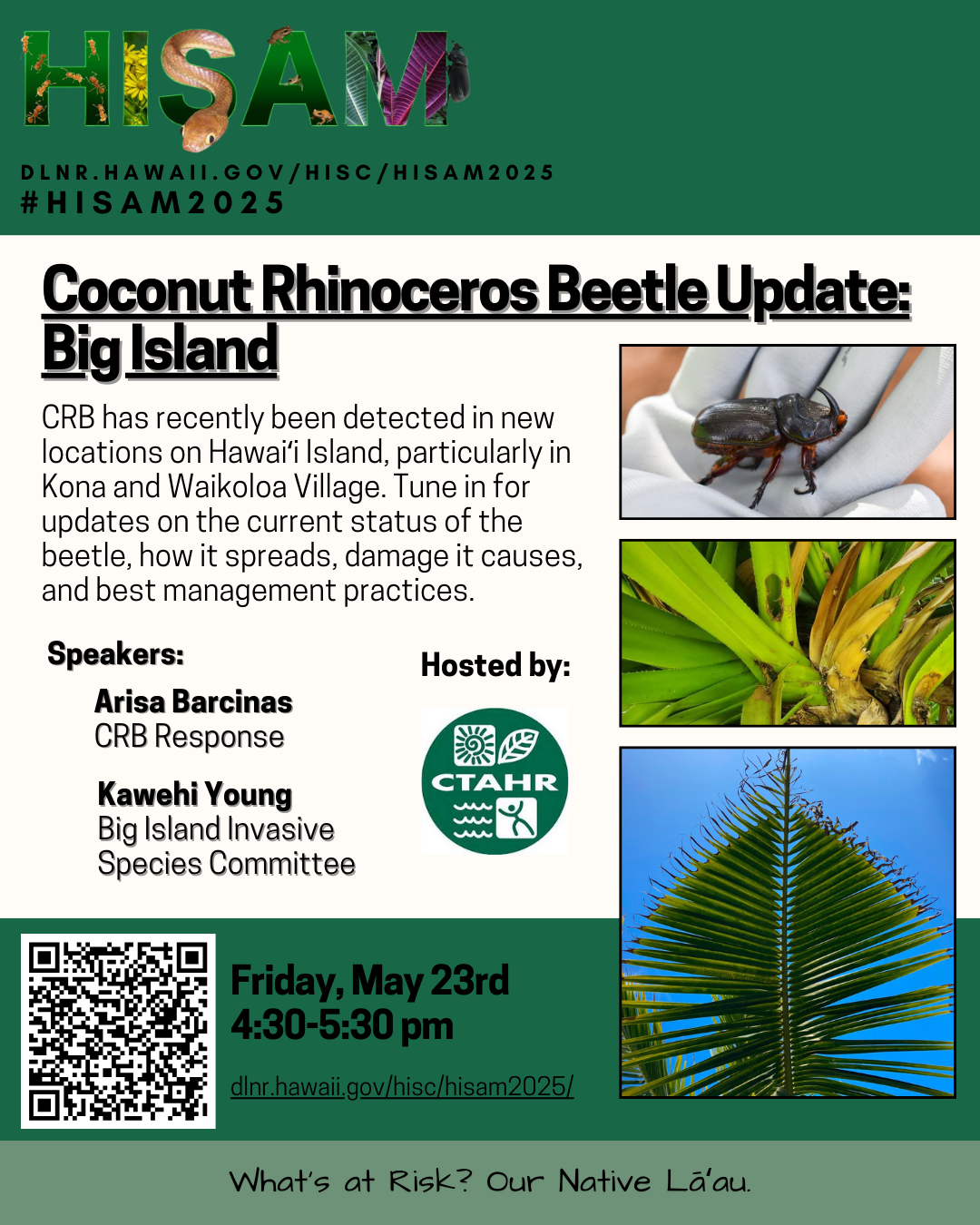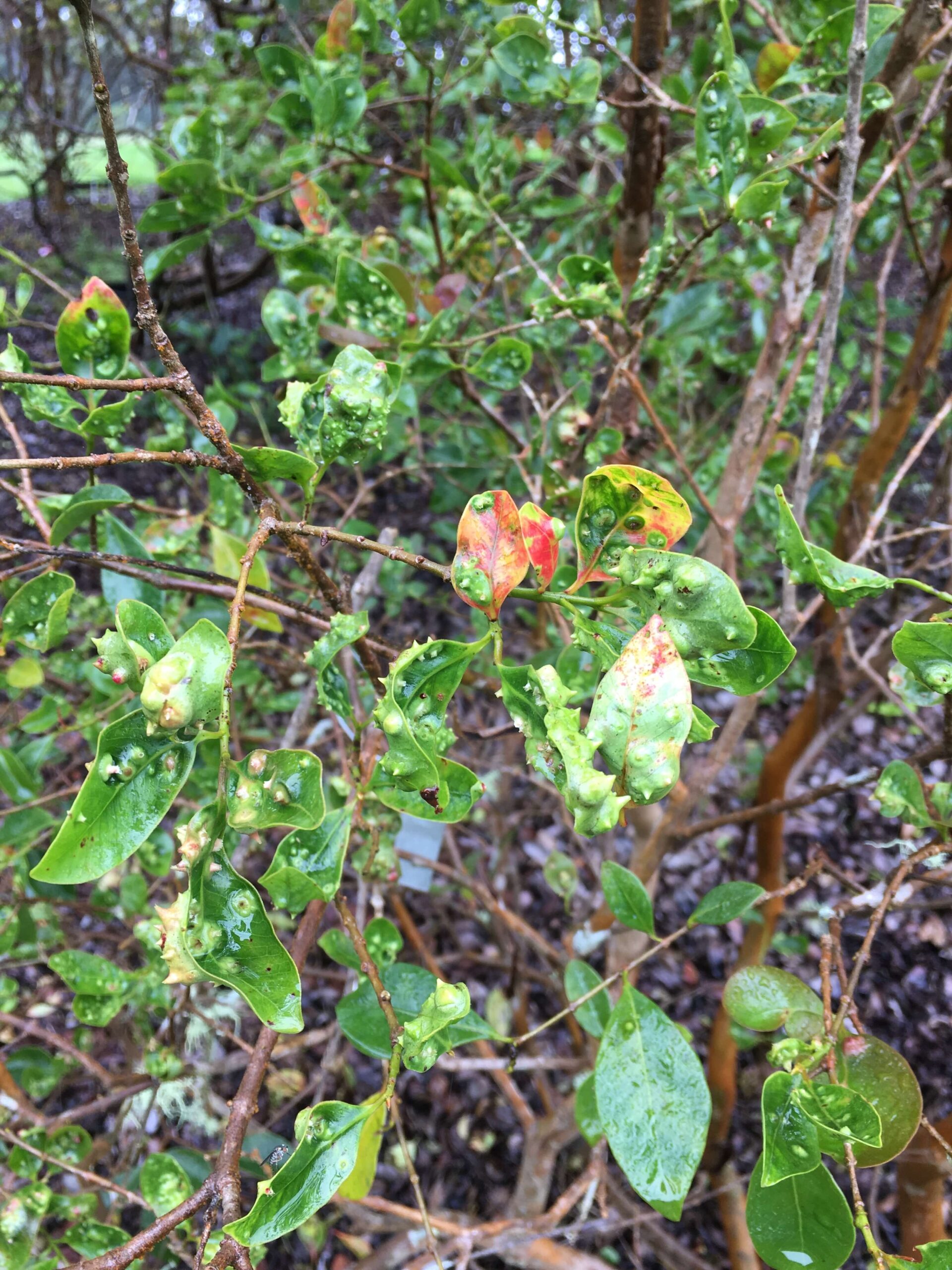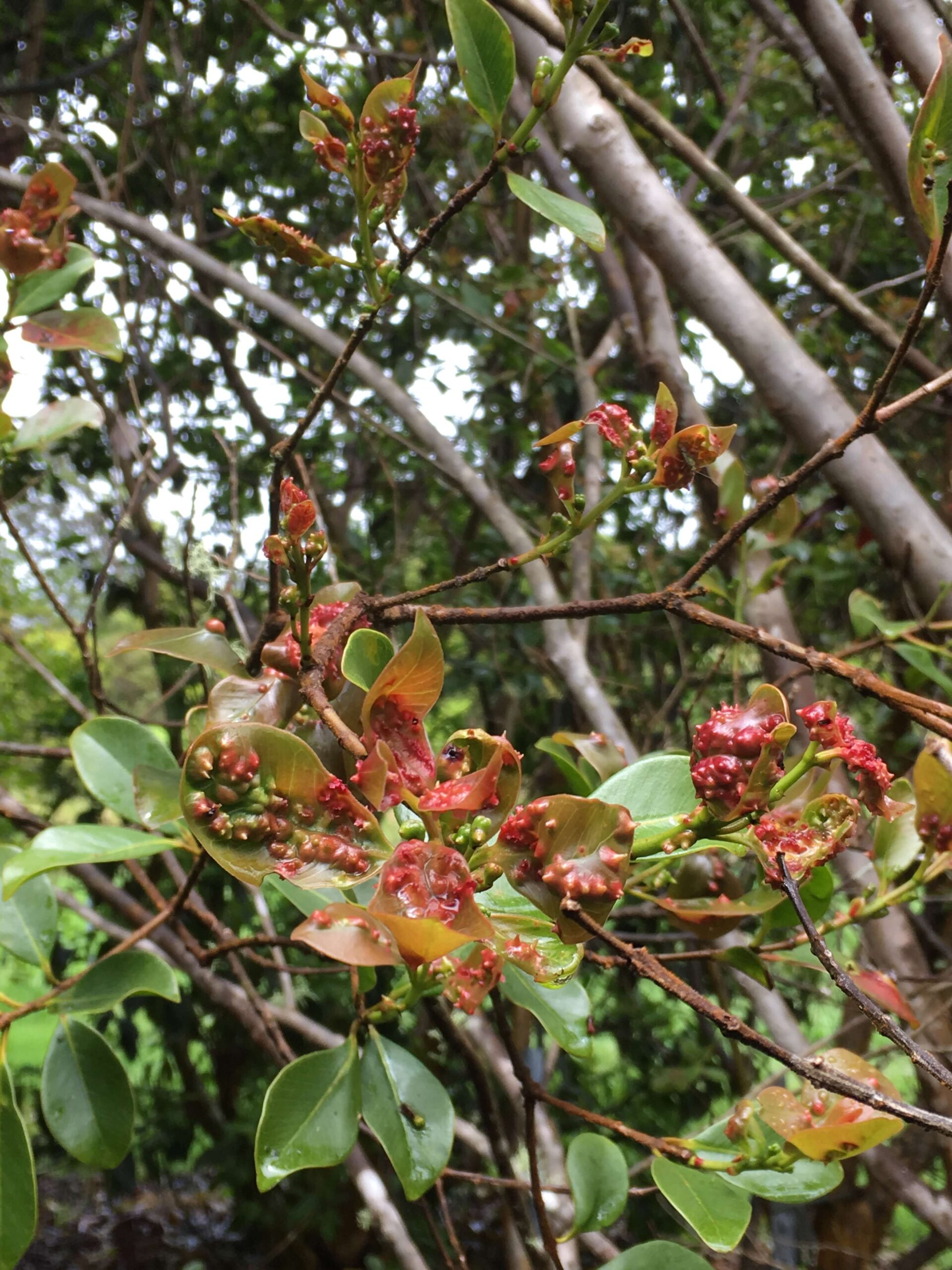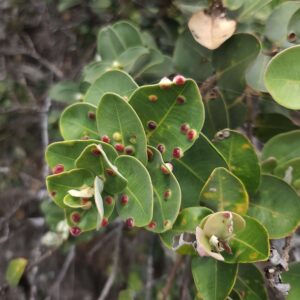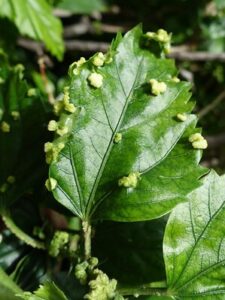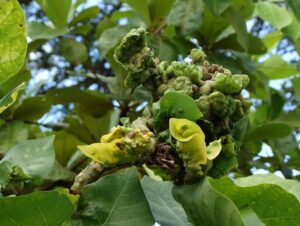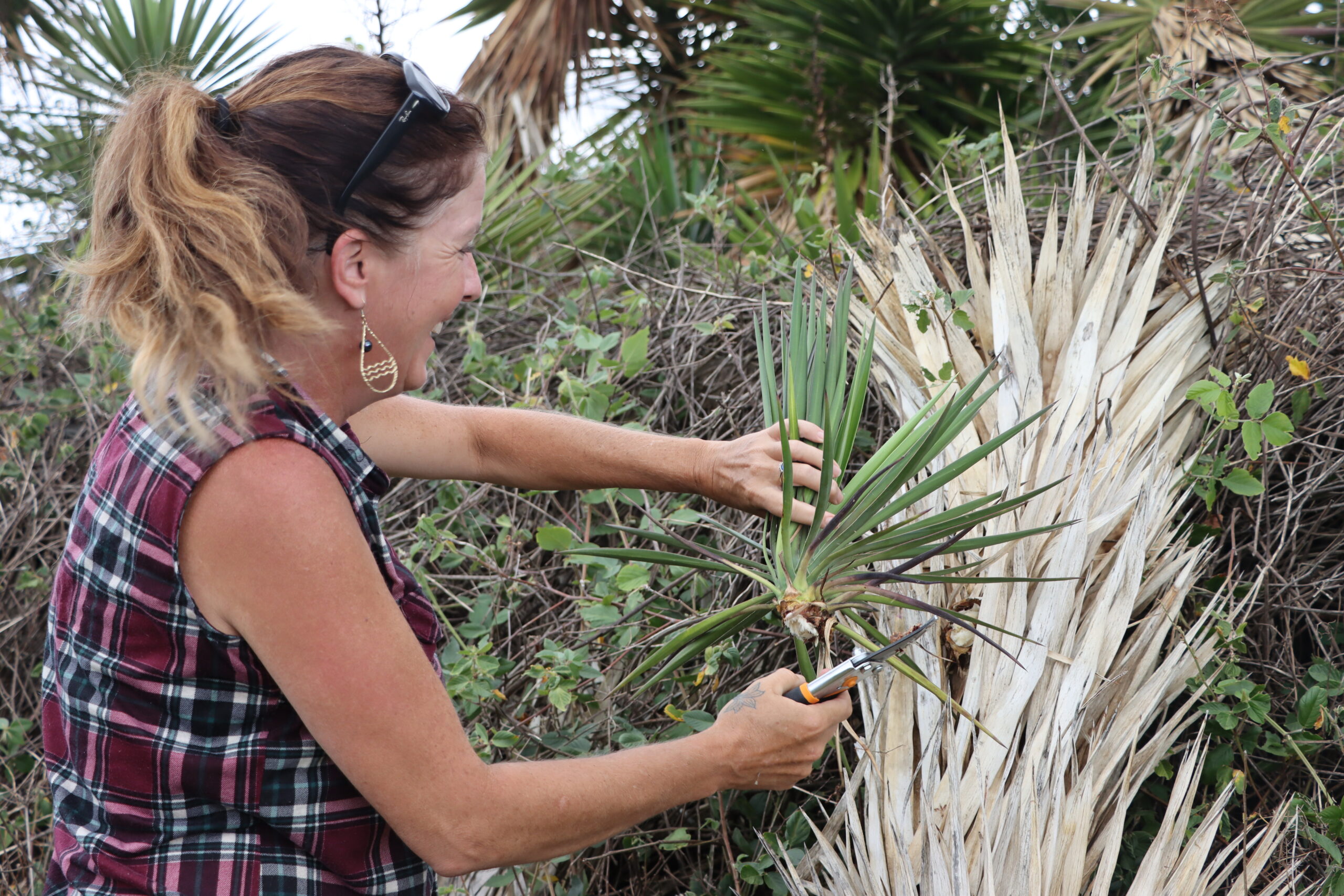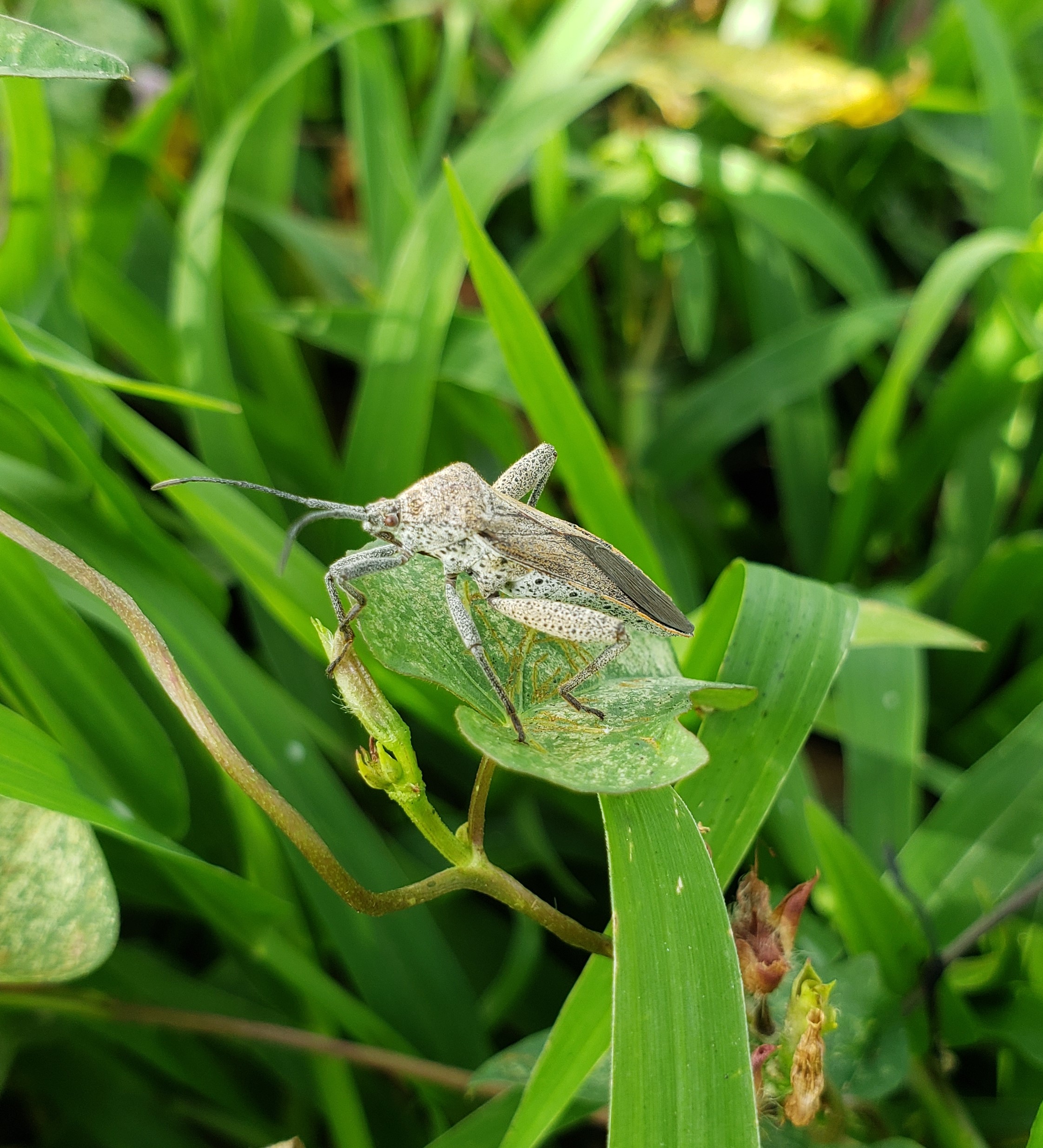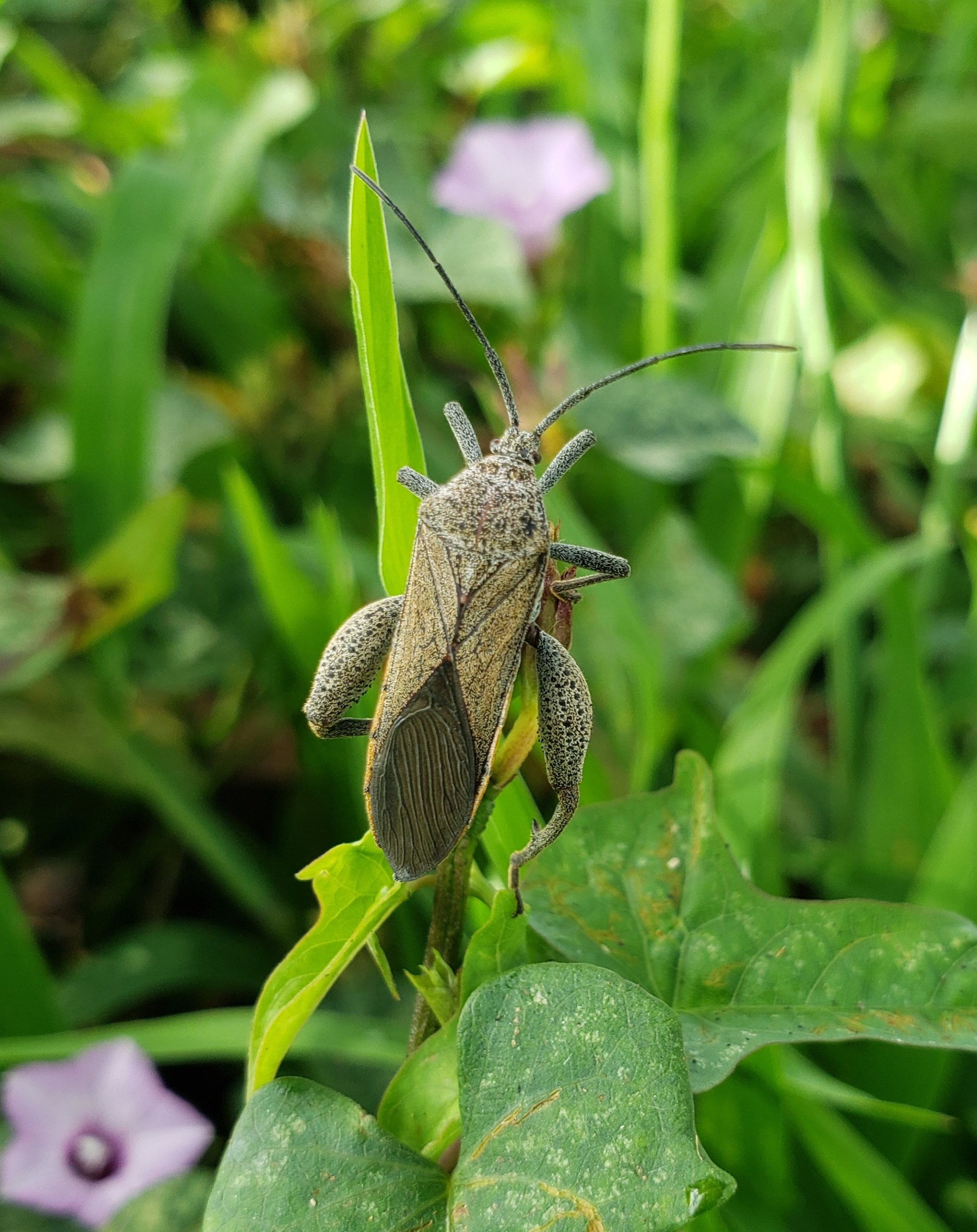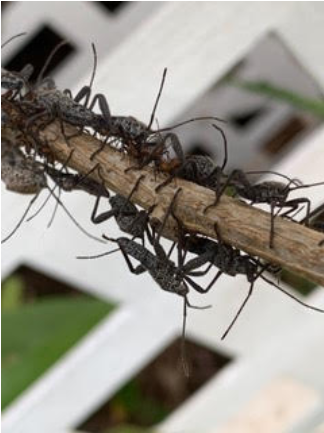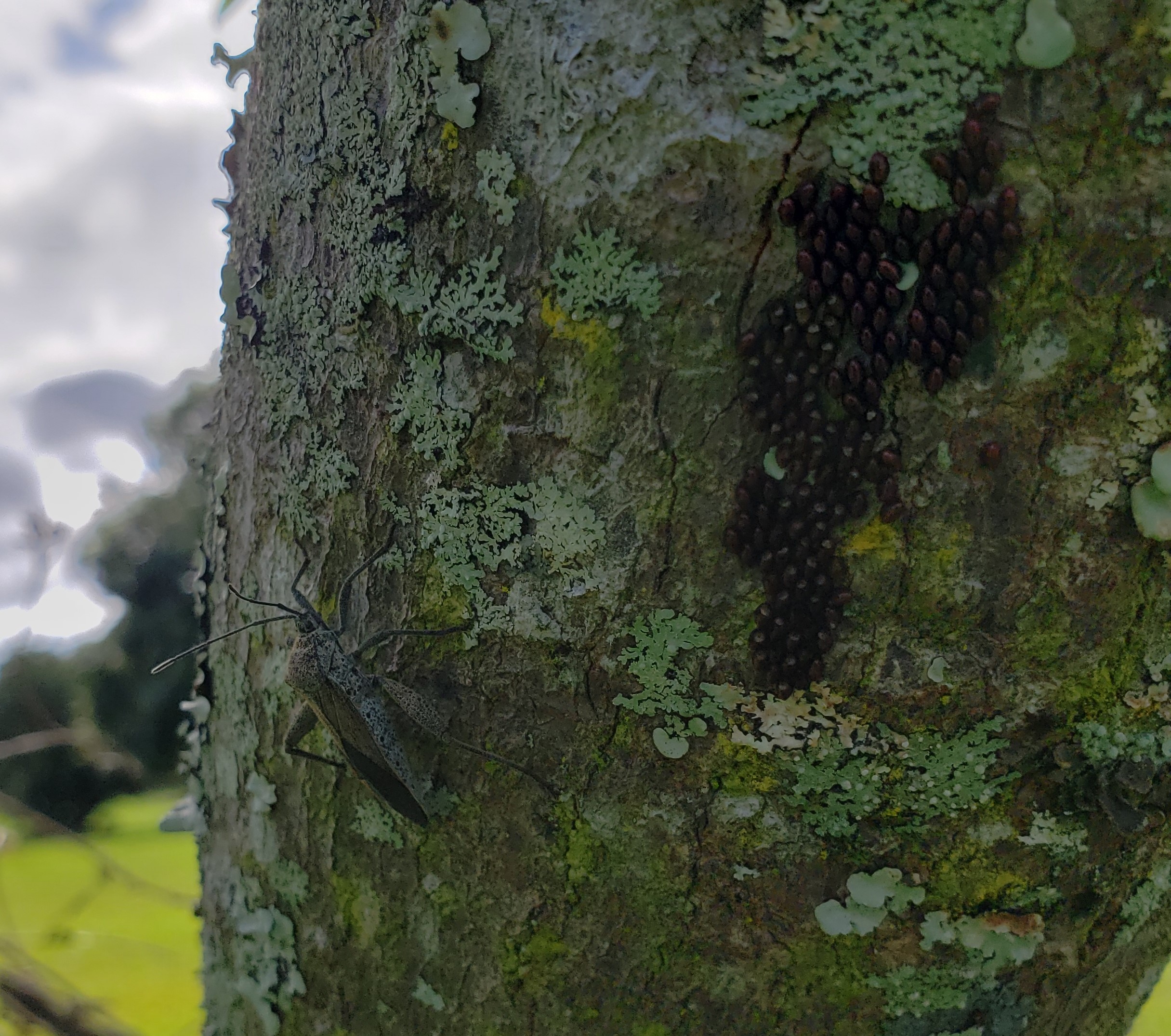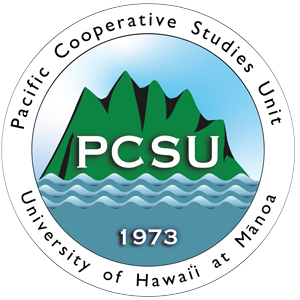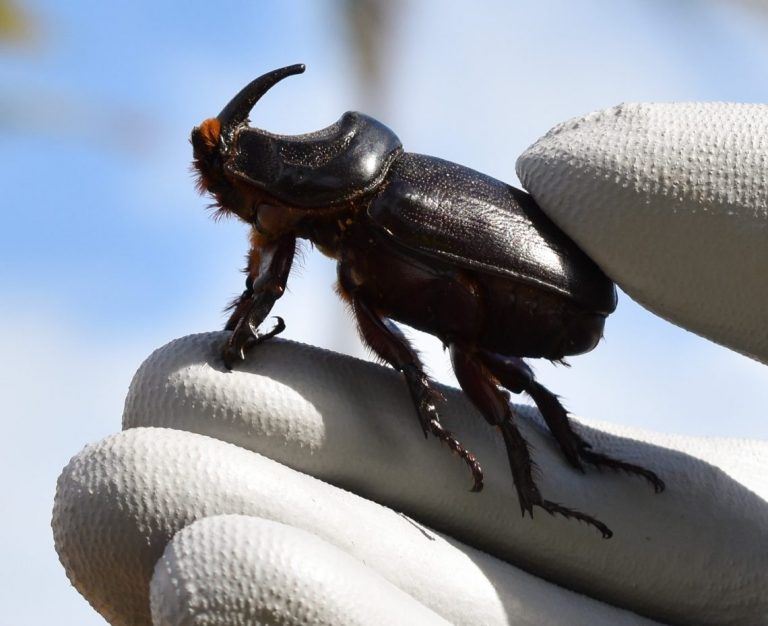
What is the Coconut Rhinoceros Beetle?
The Coconut Rhinoceros Beetle (CRB, Oryctes rhinoceros) is an invasive pest that poses a severe threat to palm trees in Hawaiʻi, including coconut, date, and native loulu palms. This beetle damages trees by boring into the crown to feed on sap, weakening and eventually killing the plant. First detected in Hawaiʻi on Oʻahu in 2013, CRB has spread across the island, causing widespread concern for agriculture, landscaping, and native ecosystems.
CRB on Hawaiʻi Island: A Timeline of Events
July 2025: Three adults caught at Kona airport and Keahole Ag park.
June 2025: Ten adults caught at Kona airport, Keahole Ag park, and HOST traps. New detection of 1 adult at Kiholo. New detection of 4 adults at HCC Palamanui. New detection of 1 adult at Kukio.
April – May 2025: Eight beetles are found in Kona at HOST Park, Keahole Ag Park, and Kohanaiki. Training sessions on CRB awareness and management have been conducted for landscapers, resort staff, and community members. Breeding traps have been installed at HOST Park alongside existing detection traps. Efforts to locate breeding sites and conduct dog-assisted detection surveys continue to expand.
March 2025: Four adult coconut rhinoceros beetles are found in Kona, making this the first detection outside of Waikoloa. Trapping, surveying, and outreach efforts are ongoing.
May 2024 – February 2025: BIISC continues palm health surveys, engages in scent-detection efforts using a trained dog named Manu, and expands community outreach to encourage public reporting.
December 2023 – April 2024: Intensive trapping and survey efforts take place, with four adult CRB detected at different locations in Waikoloa. Despite extensive searches, no larvae or breeding populations are found, providing cautious optimism that the population is still in its early stages.
November 2023: HDOA confirms the beetle’s identity, launching an interagency response with BIISC and other partners to assess the extent of the infestation.
October 2023: The first CRB detection on Hawaiʻi Island occurs in Waikoloa Village when a resident submits a suspicious beetle to the Hawaiʻi Department of Agriculture (HDOA).
What’s Being Done to Stop CRB on Hawaiʻi Island?
Stopping CRB before it becomes established is critical. Here’s how BIISC and its partners are responding:
1. Intensive Monitoring and Early Detection
- Over 100 detection traps deployed in Waikoloa, Kona, and surrounding areas.
- Scent detection dog surveys with Manu, who is trained to sniff out CRB.
- Ground and aerial surveys to check for signs of beetle damage.

2. Community Involvement and Reporting
- Public education campaigns to help residents identify CRB, its damage, and how to report sightings.
- Trap monitoring program allowing residents to host CRB traps in their yards.
- Workshops and school presentations to engage youth in invasive species awareness.

3. Prevention and Rapid Response
- Interagency collaboration with HDOA, DLNR, and other partners to coordinate island-wide efforts.
- Strict green waste management to prevent accidental spread via infested plant material.
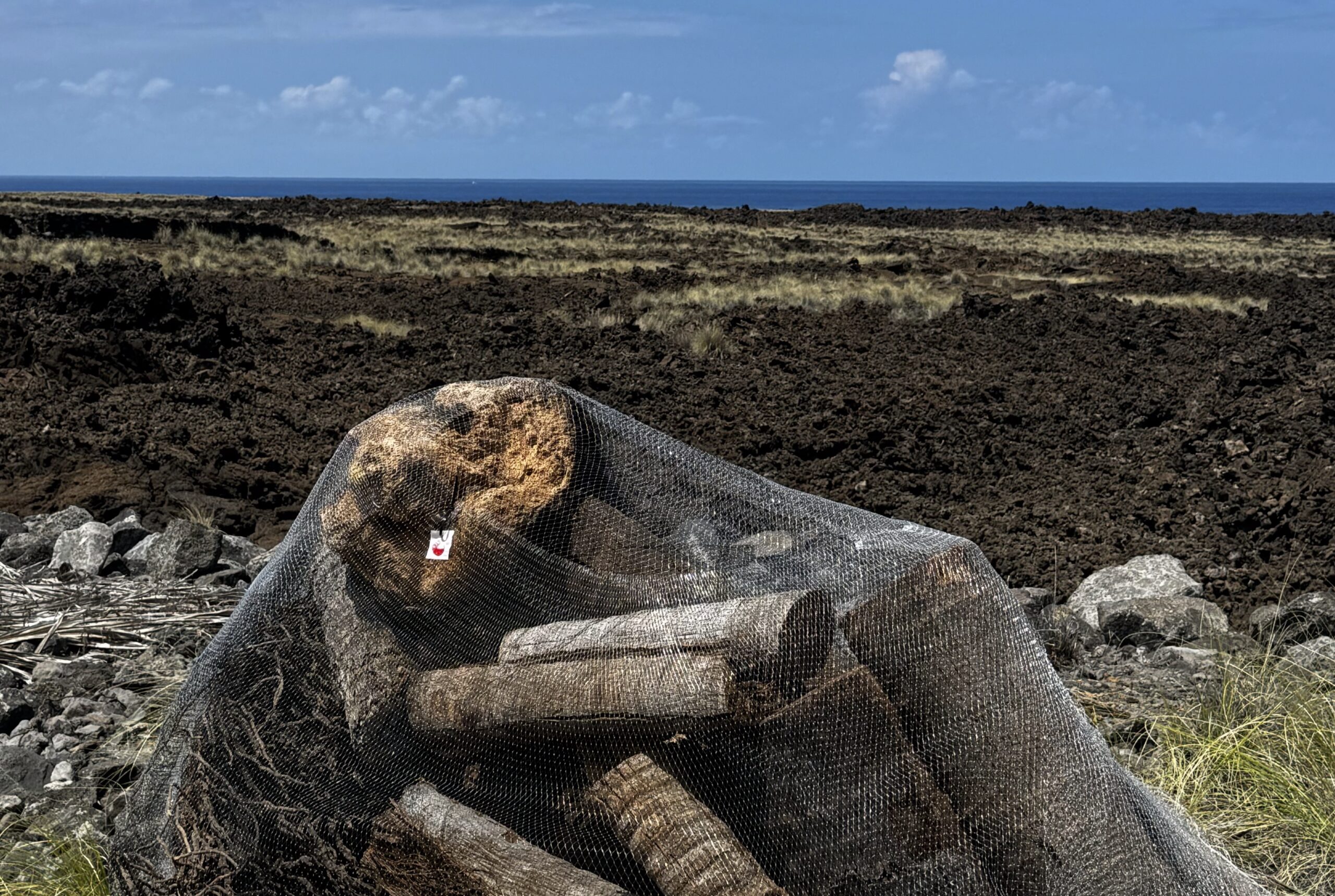
How You Can Help Protect Hawaiʻi Island
Stopping CRB is a team effort. Here’s what you can do:
- Report any suspected beetles, larva, or palm damage immediately to BIISC or HDOA.
- Be mindful of green waste disposal—CRB is most likely to be found in green waste, compost, mulch, etc.
- Avoid moving material ideal for CRB breeding.
- Check your palms for V-shaped cuts, boreholes, or dying fronds.
- Spread the word by sharing this information with neighbors, landscapers, and farmers.
Looking Ahead
No additional CRB breeding sites have been found on the Big Island since the original detection in 2023, so continued vigilance is crucial. BIISC and its partners will remain on the front lines, but community participation will be the key to stopping CRB before it becomes an island-wide problem.
Stay updated on our efforts and sign up for alerts at www.biisc.org.
